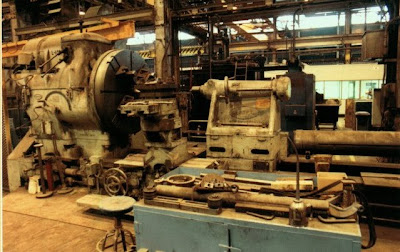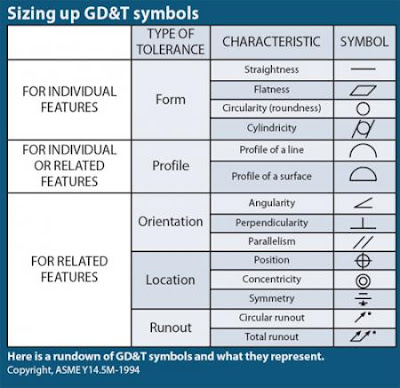DIAGRAM FASA (PHASE DIAGRAM)
Sunday, December 6, 2009
Home » Archives for 2009
Sunday, December 6, 2009
Saturday, October 31, 2009
Sunday, September 6, 2009


Posted in: Fischer Lathes, lathe, MESIN BUBUT | | |



Posted in: Fischer Lathes, MESIN BUBUT | | |

Specifications:
Manufacturer: CRAVEN (U.K.)
Capacity: 72" Swing Diam. x 48' Between Centers
Speed Range: 0.8 - 95 RPM -FULLY VARIABLE, (Solid State Control)
Threading: Inch and Metric
Leadscrew: Dual, both on front and rear
Chuck: 70", 4-Jaw chuck
Steady Rest: Yes, large 3 Stedy Rest; 2 point Follower
Motor Power: 60 HP
Machine Weight: ±120 Tons (±240 000 Lbs)
Equipped With:
* Twin Carriage, Run on Front or Back
* Rapid Traverse
* Full length Dual Threading; Leadscrews front and back
* 4 Prismatic Square Ways, (shears)
* Rebuilt Headstock at cost.........$107,000 (CAD)
* Full Solid-State Electronic VARIABLE SPEED CONTROL, Cost $32,000 (CAD)
* Motorized Tailstock
* Large box of miscellaneous goodies, not even opened
Posted in: lathe, MESIN BUBUT | | |
Saturday, September 5, 2009

Stock No: 1868
Specifications:
Manufacturer: CMC (Canada Machinery Corp., Galt, ON)
Serial No.: 6848
Swing in Gap: 116" x 76" btc (in gap)
Swing Over Bed: 64" ±
Between Centres: 14' ±
Faceplate: 76" (with slide gap grooves & bolt slot - with rim or spindle drives)
Note: Faceplate outer rim has screw adjustable back up rollers
Spindle Speeds: 8
Threading: 17 threads from 1 to 18 tpi (incl 11.5 ")
Spindle Drive: V Belt main drive to spindle through electric clutch
Electrics: 10 - 15 HP - 550V/3Ph/60Hz Belt Drive
Equipped With:
* Pendant Control, (Telemecanique push-button remote motor starter)
* Drip Central Lube to Main Gear Box
* 4 Centres
* Cutting Tools
* Change Gears, T Bolts, etc.
* Large T - slot Extension Forward from base to allow machining O.D. of
largest parts - 70" L-R X 36" F-B
* Two Compound Slide Risers
Dimensions: 180" Overall (with minimum gap length)
90" F-B (with faceplate installed)
120" Height Overall (106" Height with motor drive removed)
Posted in: lathe | | |
Posted in: CNC, lathe, MESIN BUBUT | | |

Specifications:
Max, Swing over Bed: 90"
Max. Center Distance: 52' 5" (with right end of tailstock flush to end of ways)
Faceplate: 60" 4-Jaw Chuck
Speeds: 16
Speed Range: 1.85 - 59.3 RPM (Var Speed Control added)
Controls: Push-Button Stop-Start Forward-Reverse-Jog
Threading: Full length
No. of power Feeds: 48
Feed Range: LONGITUDINAL, from .011" - .628"
CROSS, from .007" - .400"
No. of threads cut: 48 (w, 3 change gears. Others also supplied)
Threading range: From ¼ - 14 tpi (incl. 8 ½)
Spindle Bore: 2-3/4"
Steady Rests: Yes, Roller type: 66" Ø
50" Ø
30" Ø
Carriages: Heavy Duty, with Factory risers, central pressure
lube aprons, and with 4 side Toolblock clamping, on top
compound, on graduated swivel risers, mounted on main
crosslides. Motorized Rapid traverse on front of apron.
Tailstock: Offset geared-feed type for ease of use
Quill size: # 7 Morse Taper
Offset travel: Cross travel offsets up to 7" (for long tapers)
Live Center: Yes (almost new)
Construction: HEADSTOCK: standard countershaft type layout. Main
gearbox with Quick-Change selection of Feeds, Speeds and
Threads; Full motorized lubrication to main bearings,
gearbox etc. Full length leadscrew has take-up adjustments
for play etc.
BED: Two piece: 10" W. Flat ways, some scoring, but
easily re-surfaced.
Main Motor: 40 HP 3 Ph @ 875 RPM (larger easily fitted)
Dimensions: 64'6" (on floor) + cable recoiling reel
109" High + Levelling jacks (up to 7" extra if needed)
Weight: 35 - 40 Tons (est.)
Lathe is Equipped with:
* Rapid traverse
* Full-length threading to very large pitches
* Two piece bed & lead screw for ease of shipping & assembly
* No pits
* 3 Large Roller Steady Rests
* 60" 4-Jaw chuck / Faceplate
* Large & Heavy Duty
NOTE: JOHN BERTRAM & Sons, Ontario, built larger, heavy-duty and precise
machine tools until the 1960's. Parts are still available. Many major American machine
tool names of the mid-twentieth century were also built in Canada, and in many Bertram
versions, they were IMPROVED on the original design. Examples are Niles-Bertram,
Cincinnati-Bertram & Acme-Bertram etc. In MOST CASES, the BERTRAM version
was better built, often because the improvements were not yet incorporated into the
original American design.
Price: . . . . . . . . . . . . . CALL
Posted in: MESIN BUBUT | | |
Posted in: gambar mesin, MESIN BUBUT | | |
Thursday, August 27, 2009
Posted in: Colt diesel 125, engine tronton, gambar mesin | | |

Posted in: engine tronton, gambar mesin, mesin tronton | | |


Posted in: gambar mesin, Geometric Dimensioning | | |
Wednesday, August 12, 2009
Posted in: Central Lock System | | |
Copyright 2011 | All Rights Reserved